Sala10: Susana Solís
virtual exhibition
Réparer les lignes [Repair the Lines]
“What hath God wrought?” The year was 1844 and this was the first telegraph message in the world, sent from the US Capitol to the Baltimore train station. This technology, which has become obsolete and is currently in disuse, was crucial for political and military communication. Its use would democratize over time as it became accessible to ordinary citizens.
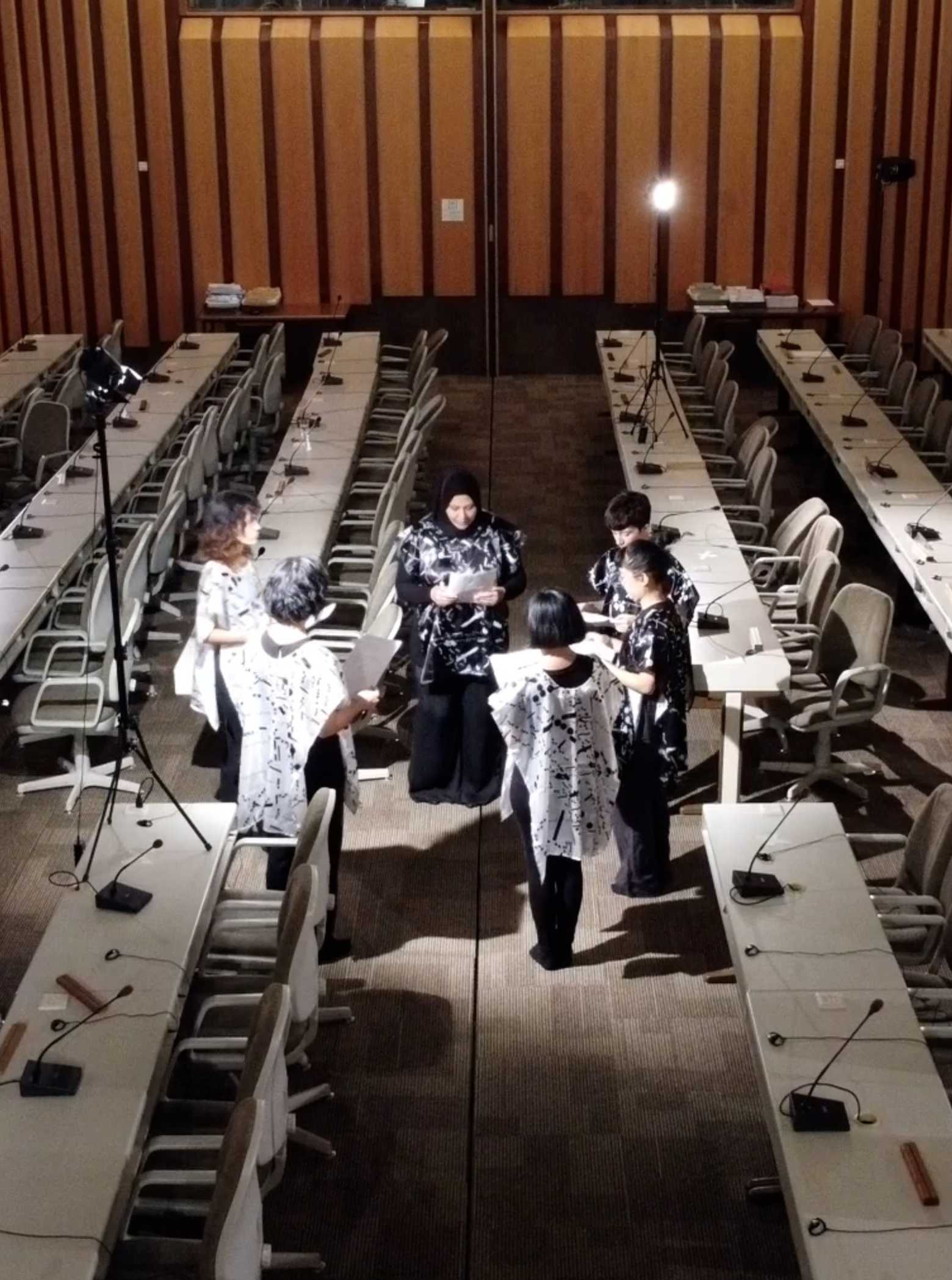
Systems of Translation
The telegraph is the jumping-off point for the most recent investigation by the Mexican artist Susana Solís, whose artistic production has been characterized by its exploration of language, communication patterns and the political and poetic scope of the word. Her work has thus focused on the affective, formal, semantic and collaborative possibilities of language as a space for coming together and falling out.
Réparer les lignes [Repair the Lines] (2025) forms part of Solís’s research on female telegraph operators, a project that includes previous pieces by the artist such as the publication Alma Palpitante [Palpitating Soul ] (2022) or the series of drawings Pulso [Pulse] (2022). This long-term exploration is rooted in the artist’s biography, as her grandfather had been a telegraph operator: he once gave her a book that had been self-published by a group of telegraph operators, titled Semblanza trágica del telégrafo y los telegrafistas nacionales [Tragic Sketch of the Telegraph and the Country’s Telegraph Operators]. In her audiovisual piece, six women sing the Hymn of the Telegraph Operators found in this book in the six official languages of the United Nations used at the organization’s meetings in Geneva. These singers—Ruyun Xiao (Chinese), Fig Docher (English), Anna Tretiakova (Russian), Elham Oasem (Arabic), Matylda Florez (French) and Susana Solís herself (Spanish)—intone the hymn in their native tongues, referencing the fact that the telegraph was one of the first communications systems to incorporate women into the labor force.
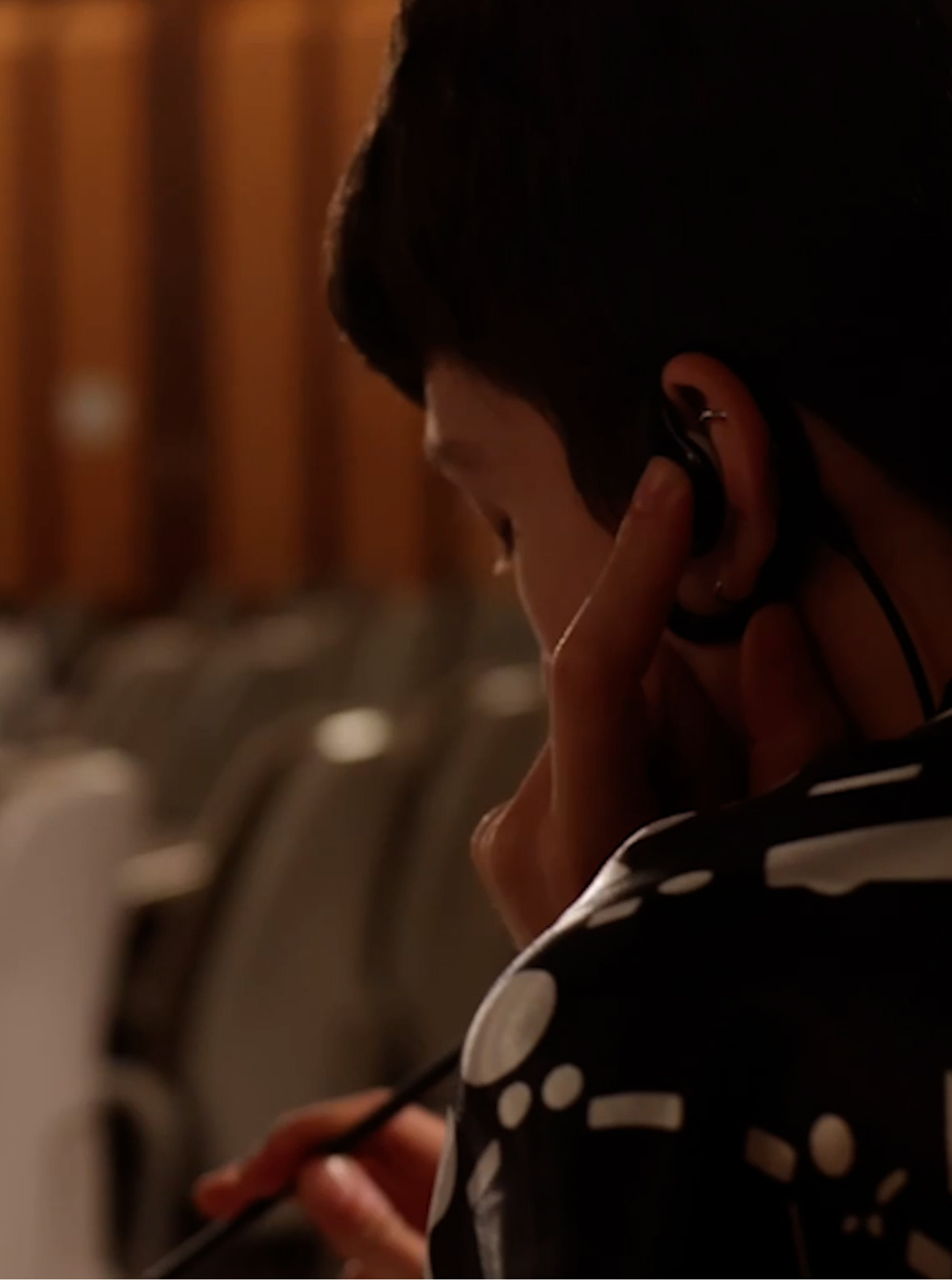
This video was recorded at the International Telecommunications Union, which was founded 1865 as the International Telegraph Union and was later incorporated into the United Nations in 1947, the same year the aforementioned book was published.
Playing with perspectives and camera angles, the bodies of the performers intersect in space, dispersing and separating until they finally come together in a circle. The constantly moving image seems to allude to the permanent displacement and circulation of communications systems and their messages. The clothing worn by the six women also contains the text of the hymn written in Morse Code, the famous system of dots and dashes that was invented by Samuel Morse to transmit telegraph messages. Morse was a painter and an artist himself, which explains the formal plasticity of the code when represented visually. Solís’s piece thus generates a superposition of layers between sign, sound and movement, immersing us in the complexity of communications systems and all their political and social aspects.
Beyond the sonic aspects of the piece, Solís works with the presence and choreography of the bodies onsite, the rhythm of their circulation. The relevance of the corporeal further echoes the work of telegraph operators who created a rhythm by tapping on a telegraph key, creating a sonic cadence of displacement. The pulsation of the labor performed in this trade gave rise to a unique sequence, a drumming and a tempo.
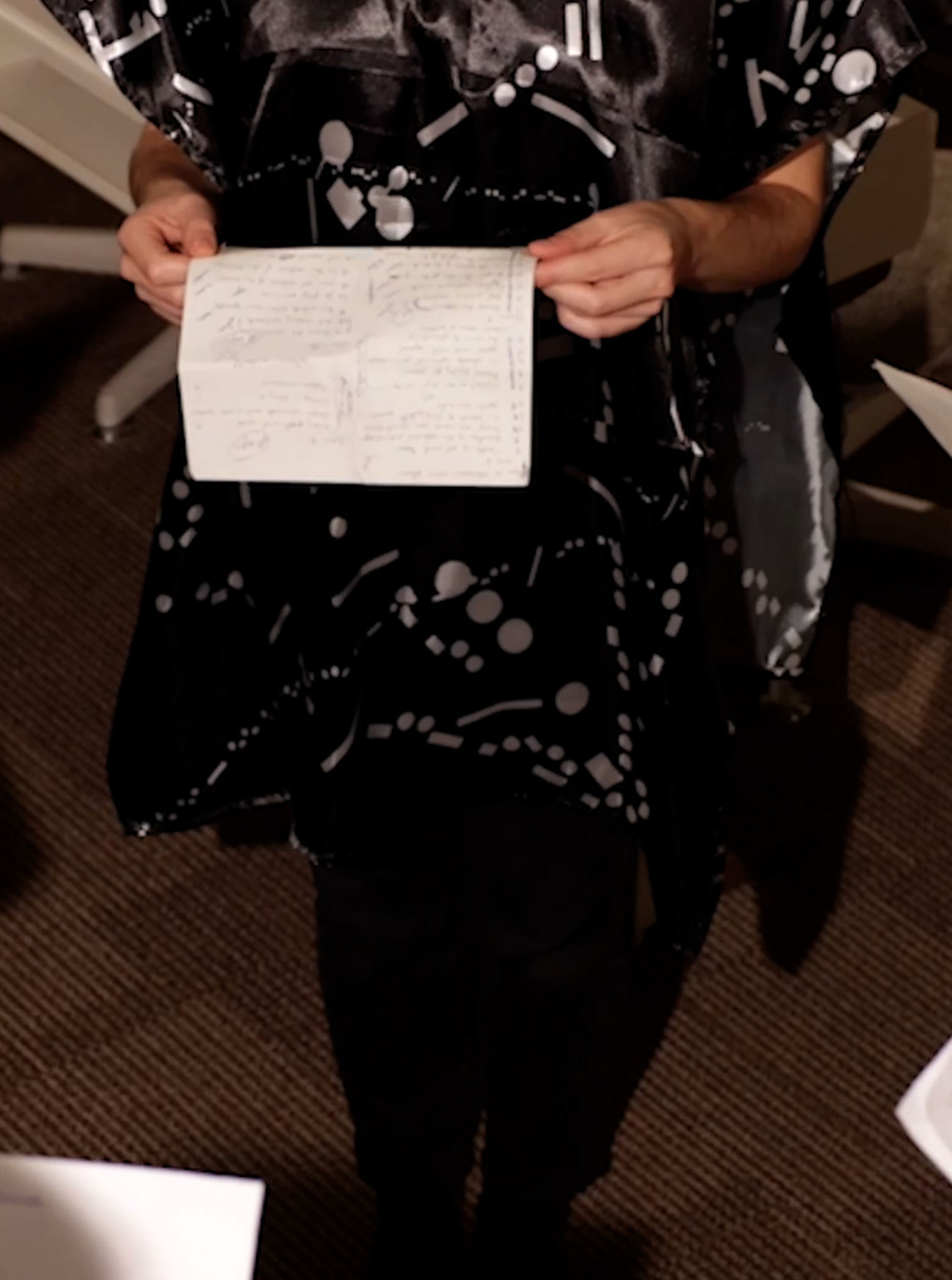
Repair the Lines allows us to rethink the notion of rewriting and communication as a site of ambiguity, but also of possibility. How can we come to understand each other? What are the limits (and the losses) of this constant translation? For Walter Benjamin, translation consists of the act of rewriting and relating the intervals between different tongues: “No translation would be possible if in its ultimate essence it strove for likeness to the original. For in its afterlife—which could not be called that if it were not a transformation and a renewal of something living—the original undergoes a change." [1]
In the interstice between writing and interpretation, translation becomes a communicative mediation of our ever-present Tower of Babel: we dwell in the strangeness of languages. Beyond a hermeneutic vision, Solís emphasizes the possibilities of linguistic confluence as a vehicle or a channel, but also as a limit. Given the impossibility of neutrality, she presents us with a polyphony that insists on the subjective contributions of this constant movement of meaning. The search for a place for listening where one won’t lose one’s own voice, where language (and the body) find another place of being.
Virginia Roy Luzarraga
[1] Walter Benjamin, “The Task of the Translator,” in Selected Writings, Volume 1: 1913-1926, Marcus Bullock and Michael W. Jennings (eds.), The Belknap Press, London, 1996, p. 256.
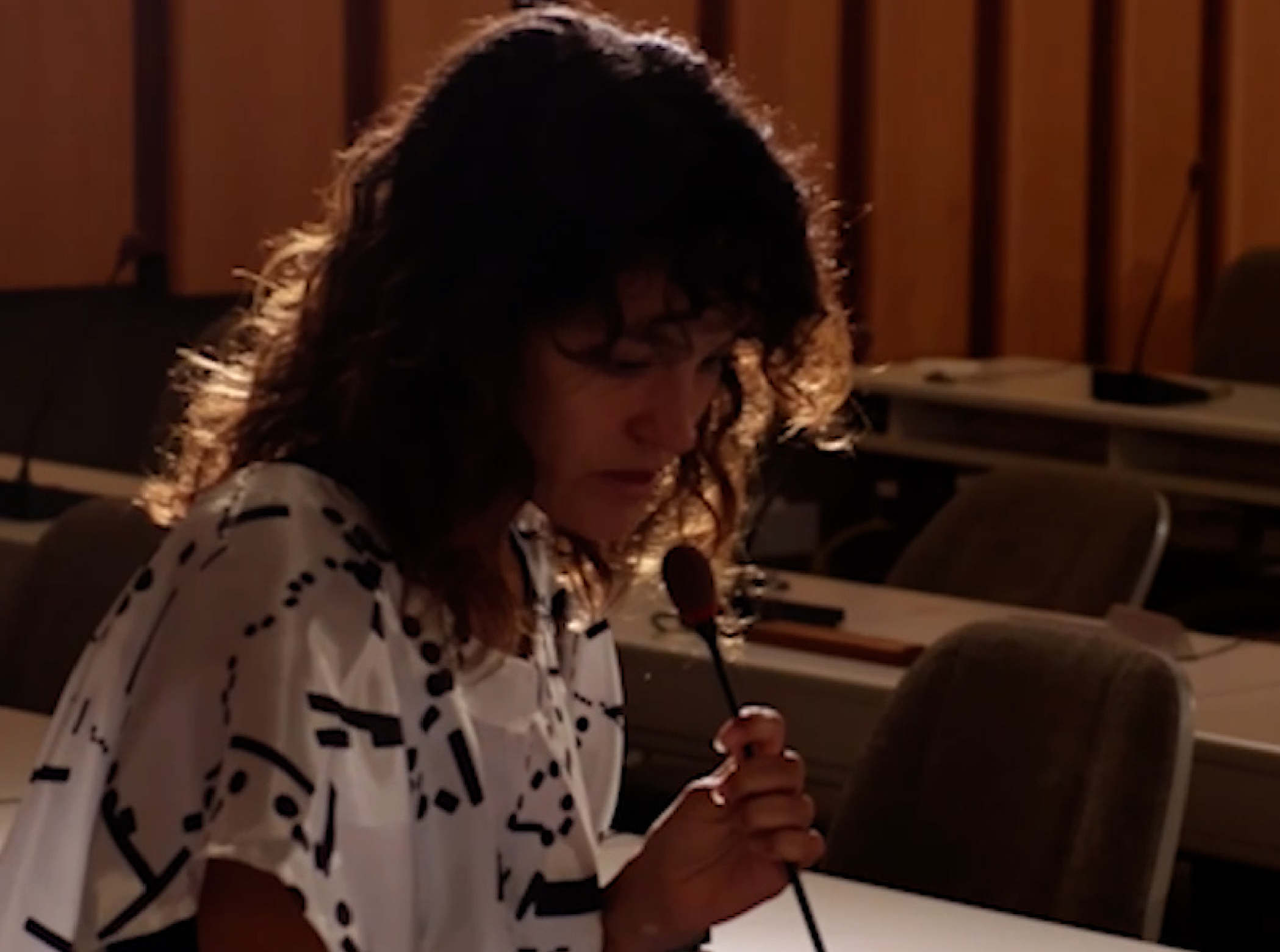
This material collects many rewritings developed by Susana Solís for her piece Réparer les lignes [Repair the Lines] (2023). This includes the original musical score of the Hymn of the Telegraph Operators that the artist took from the book Tragic Sketch of the Telegraph and the Country’s Telegraph Operators (1947)...
FULL MATERIAL HERE
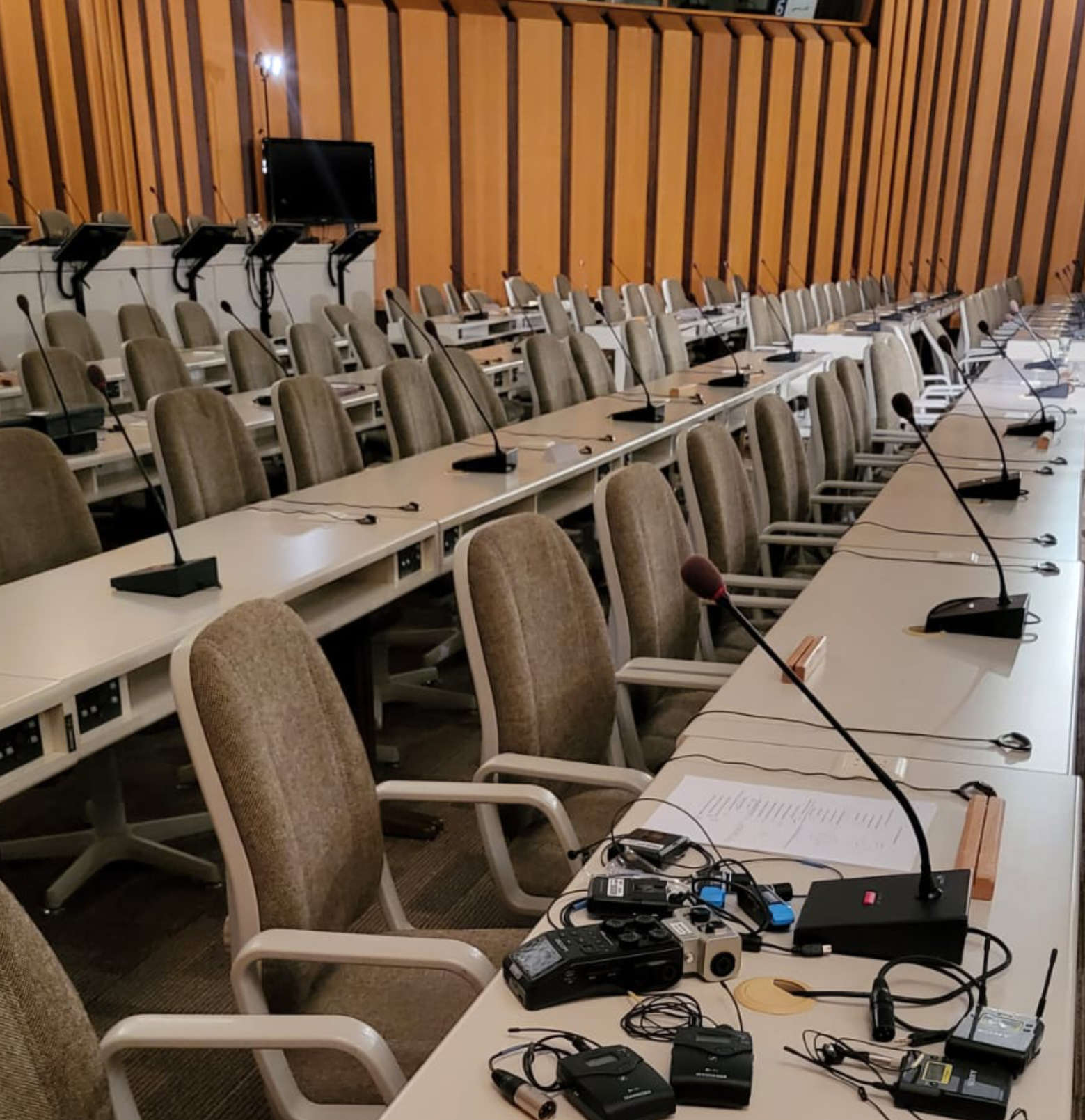
Susana Solís
Réparer les lignes [Repair the Lines], 2023
Video
4’30’’
With the support of the Déliées grant from the Fonds cantonal d’art contemporain, Geneva, Switzerland
This piece forms part of the winning selection of artworks from the 2025-2026 #Sala10 Call for Submissions.
Susana Solís (México, 1991)
Solís’s work materializes in different forms, from drawings, performances and interventions to videos, books and texts. Her work has been the object of individual and collective exhibitions in Mexico and other countries, such as Halle Nord in 2023, the Material Art Fair in 2023, Der Arf Nira En Egar UOC in 2019, Rinomina Gallery in 2018 and the University Museum of Sciences and Arts (MUCA, UNAM campus) in 2018. She has received grants such as the Bour ses déliées del Fonds cantonal d’art contemporain in Geneva (2023), a scholarship from the Hans Wilsdorf Foundation in Geneva (2019-2022) and the FONCA-CONACYT study abroad scholarship issued by the Mexican government (2019-2021).
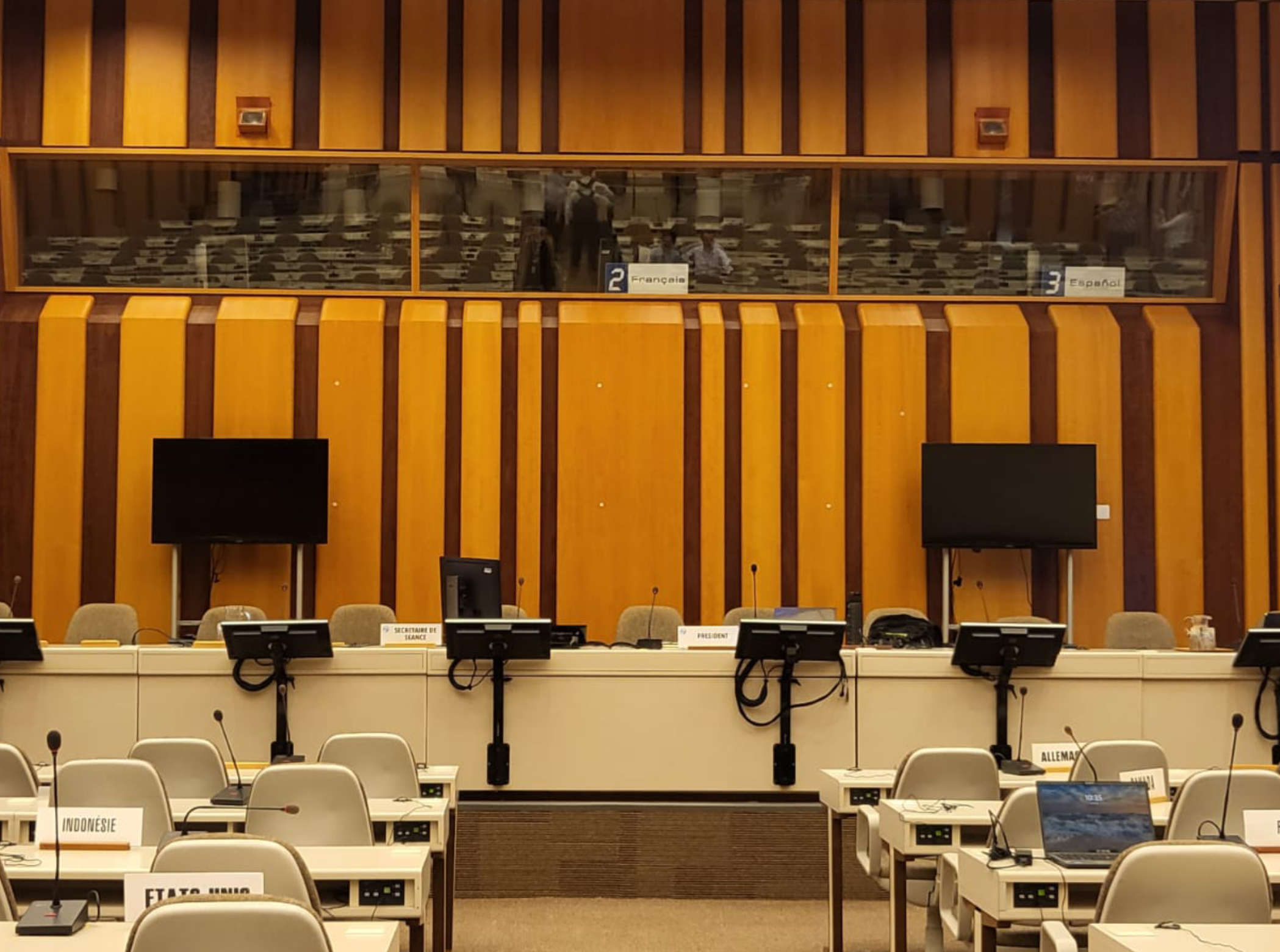
Text: Virginia Roy
Curatorial coordination: M. S. Yániz
Digital management: Ana Cristina Sol Sañudo
Content editing: Yerem Dení Mújica Toscano
English translation: Julianna Neuhouser


